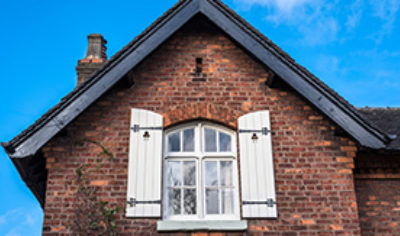Why do insurers ask such detailed questions with regard to roofs, surely a roof is a roof?....
Well basically no, to be classed as standard construction, most building insurers require a roof to be pitched in construction and covered with slates or tiles (possibly metal). If a certain percentage of the roof is “Flat” (or with some flat insurance companies, if any portion of the roof is flat) then the building may be classed as of being of non- standard construction. Flat roofs usually only make up a small proportion of the total area of a roof covering of the main building although there are many properties that’s have been designed with 100% flat roofs for a variety of reasons, often to do with planning restrictions. In the main body of a building, flat roofs can usually be seen as part of a dormer roof loft extension, in recent years this has become a popular way of adding more living space. More often than not though, they occur on ground floor extensions, perhaps over kitchen or garage. Flat roofs are normally horizontal or nearly horizontal with a low pitch.
Flat roofs can be made of a variety of materials, the following are typical:-
- Asphalt
- Felt
- Concrete
- Fibreglass
- Metal
- Plastic
- Rubber
In the United Kingdom, it’s fair to say we experience a good deal of rain so the traditional flat roof is usually made of felt on timber. Initially decking is laid down made of timber (plywood is typical) then three layers of felt are added, an additional layer of shingle may also be added to offer additional protection against weathering. Most of the damage to these roofs is not caused by wind and rain but actually by the sun which can cause cracking in the felt, the covering of stones or shingle can help prevent this although some owners tend to sweep them off( particularly if they start to acquire a moss covering) not realising they are inadvertently depriving the roof of valuable protection.
So what the problem? well basically flat roofs will have a life span of about 10-20 years and if not correctly maintained they can leak and leaks mean claims, hence the reason why many building insurance companies do not like insuring property with flat roofs.
With many insurers, if up to 25% of the total roof area is flat then this is generally acceptable at standard terms with an appropriate flat roof warranty. Areas above this amount and you may find the number of insurers prepared to offer cover diminishes rapidly. The flat roof warranty imposes certain conditions on the policy, requiring the homeowner to make sure the roof is checked on a regular basis and that any damage is rectified Ensuring the roof is keep weather proof helps to prevent leakages and keep down the number of claims.
If you are buying buildings insurance for a property with a flat roof, its essential that you state an accurate percentage to the insurance company in respect of the flat roof area. Usually they will apply a warranty to the policy which will require you to have the roof covering checked by a builder every couple of years to make sure it is still watertight. Many insurers will not cover flat roofs once over 12 years unless the covering and roofing support (usually timber) is replaced) Regardless of insurance, you should keep an eye on the roof yourself, particularly during periods of bad weather, make sure that the roof is draining properly and is free of pools of water (unless it was designed to catch water) Any sections of felt that become cracked or worn should be replaced to help ensure the roof remains watertight. Make sure you fully understand the scope of your policy wording, leaking flat roofs are very common and you will need to make sure you are fully compliant with all the terms and conditions to ensure a claim is valid.
























